Intern Thoughts: A Weekly Response
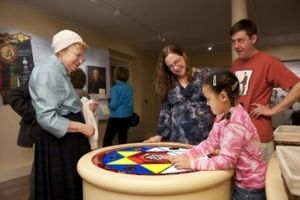
Every week we’re asking our summer interns to share some thoughts and responses to various experiences and readings. This week we asked them to read and respond to one of two readings, selected chapters from Identity and the Museum Visitor Experience or selections from “Building the Future of Education: Museums and the Learning Ecosystem.”
The Importance of Audience
In Identity and the Museum Visitor Experience, Falk lays out the types of visitors a museum needs to cater to in order to create a successful experience. The types vary from the ‘explorer’, who wants to learn as much as they can while wandering through the exhibit and resents overly structured exhibits that create a linear “forced march” to the end. At the other end of the spectrum lie the ‘social facilitators’, who seek out a museum as a place they can catch up with friends. For them, the content of the exhibit is secondary. Visitors use the museum in different ways. Falk rightly points out that museums too often rely upon insubstantial demographic data (e.g. age, gender, ethnicity, income, education level) to determine whether someone will visit their institution rather than information about their values and goals. The values that bring them to the museum in the first place, he argues, will drive their whole experience.
At its core, this chapter is about audience, a concept that I know from my training as a writing tutor is essential to address when creating anything from novels to labels in a museum exhibit. For instance, an exhibit that is very text-dense might be alienating to visitors who prefer to move through the gallery quickly. Falk encourages museum professionals to think as if they were a certain type of visitor. What would a ‘recharger’, who values a pleasant environment and seating, think of the way the lobby is set up? What would they like to see more of? Falk’s work really speaks to the universality of challenge of audience.
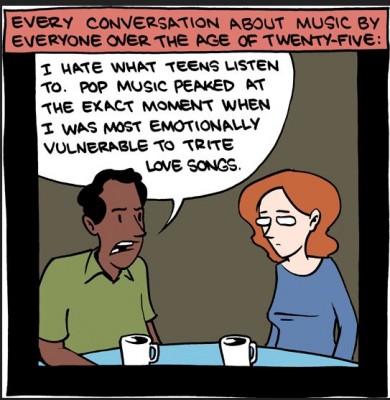
~Alice Wynd
Increasing Museum Influence through the Internet
This week I read a selection from the Center for the Future of Museums titled “Building the Future of Education: Museums and the Learning Ecosystem.” The two articles that struck me the most were about the Henry Ford Museum and how it is using the internet to reach wider audiences of learners. Museums as stationary institutions need visitors to travel to them whereas the internet is available everywhere. Many now have internet access in their own homes and if they do not, public libraries offer internet access around the country. The internet removes geographical barriers of museum learning.
The Henry Ford Museum is located in Dearborn, Michigan. It houses treasures like the Rosa Parks Bus and the chair from the theater where President Lincoln was shot as he watched a play. These important pieces of American History are far away from many, but the museum has allowed people to become virtual visitors. They have created an interactive website that allows people to read articles and watch videos about museum exhibits and more.
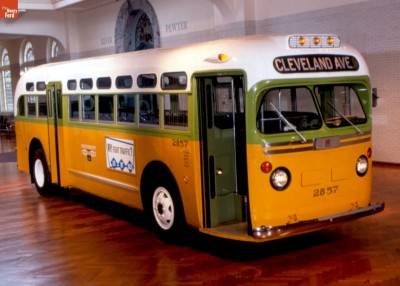
Here at the Jewish Museum of Maryland, we have created a virtual online supplement to the temporary physical exhibit, “Beyond Chicken Soup,” currently on display in the museum. There are online articles based on the different sections and organized by the way one would see them here. While it is not a complete substitute for seeing the exhibit itself, it gives those who do not have access to the museum a chance at learning and those who have access a chance to explore ideas further.
Links:
http://chickensoupexhibit.org/explore/
https://www.thehenryford.org/explore/
~Rebecca Miller
Museum Visitor types
For an activity on visitor services I recently read Identity and the Museum Visitor Experience by John H. Falk, particularly the chapters discussing the types of museum visitors, which give some insight into what different visitors are looking from their museum experience. Falk says, more important than background or ethnicity is what type of museum goer a person is. Falk classifies museum goers into five groups, the experience seekers, the explorers, the facilitators, the hobbyist/professionals, and the relaxers. An experience seeker goes to museums to see their main exhibit or special items of interest; they may give a cursory look at the other exhibits. An explorer is the visitor most likely to look over every part of the museum as they are interested in learning. The hobbyist/professional is also interested in learning but they are bound to have a solid knowledge base and are looking to learn more in depth knowledge. The facilitator goes to museums more for the benefit of others, whether it is an outing with friends or a parent bringing their children to a museum. The last group of people is coming to the museum to relax and is most likely to sit in a few exhibits for an extended period of time.
The only problem is, these classifications are not constant. During the activity the other interns and I tried to identify what type of museum visitors we were, and found that most of us fall into several categories depending on the type of museum we are visiting, why we are there, and what exhibits are on display. I can fall into the category of explorer, experience seeker or hobbyist depending on the museum. I interned at the National Museum of Civil War Medicine over the past spring, and was going through docent training. As I went through that museum, I went through as an explorer, reading every panel and looking at every artifact in anticipation of possible questions I might get from tour groups. When I went to the National Geographic Museum for their exhibit on Indiana Jones I went as an experience seeker with my main goal being to see the prop Arc of the Covent. At museums where I have been several times, like the Walters, I go more as a hobbyist, going directly to specific exhibits of personal interest. One might be able to determine what type of museum visitor a person is when they come by asking some background questions, such as their previous knowledge in the area before going into exhibits or if they come with other people or alone. I don’t think it is likely to be able to predict what type of visitor a person is going to be at other museums.
~Tamara Schlossenberg
Learning Outside The Classroom
Building The Future of Education: Museums and the Learning Ecosystem does an excellent job of explaining the current education system and it’s inherent flaws. As an education major, I have spend the last several years studying the origins and shortcoming of public education, as well as how to combat it in individual classrooms.
The current climate of education is based largely on forcing students to confirm to certain standards that the government finds most suitable. While this is well intentioned, it has proven to be disastrous in recent years. No Child Left Behind (NCLB) which was passed by President Bush in 2001 had disastrous consequences including, but not limited to, an increased drop out rate. Education under NCLB leads to conformity rather than variety and creativity, as seen in the cartoons below. This problem stems from the officials in Washington trying to pass legislation to effect countless communities across the nation. Education does not happen in offices with congressmen, it happens in classrooms with teachers and their students.
The ideas presented in this article can effectively combat the stagnant nature of education. The ideas described focus on everything I plan on doing as a teacher. The “Vibrant Learning Grid” focuses on creating personalized learning systems that meet the needs of all learners. This is contrary to programs like NCLB, which insist on teaching students a narrow spectrum of topics that they mot not be suited for. Furthermore, many of their programs are interactive lessons and programs. There is a mountain of research supporting the idea that interactive styles of teaching are far more beneficial than lecture-based lessons.
To conclude, I think the article did an excellent job explaining how museums can be used to further American education. A personal, interactive form of teaching is the best mode that can be used to teach a new topic to students.
~Ben Snyder
The Henry Ford Museums IEI and the Lie of Modern American Ingenuity
Some museums and institutions of learning aside from traditional primary and secondary schools are pioneering new ways to educate children and get them excited about innovation and invention. One such destination is the Henry Ford Museum and its subsidiary educational properties, which is offering a new multi-media plan and innovation incubator to inspire the inventors of tomorrow with tales of inventors from the past and the American spirit of ingenuity.
Although an excellent way to inspire children to go into the fields of engineering and product development, and certainly to induce creativity and open minded thinking, there is a larger problem lurking in the world of invention that blocks any progress that plans like the one above intend to make.
This is mainly because of what are called patent attorney fees and patent filing fees, which are required in order to publish an invention, and to be entitled to the capital made from its production and sale. These fees can range from hundreds of dollars to several tens of thousands, and there is no definite way of estimating them. This leaves the self motivated inventor in somewhat of a quandary. If the wish to innovate independently, then they might require substantial personal wealth in order to file a patent which they intend to profit off of. In other cases, inventors can file their patents through a corporation, which pays the cost of filing, but does not entitle the inventor to the profits of the invention’s production and sale.
As hard as we may try to inspire our youth with American ideals of ingenuity and invention, and the creative methods that we use to do so, there are deeper economic and societal problems that must be solved. Otherwise, those we inspire will enter a world where they are exploited, and which is rigged against them, favoring corporations and the independently wealthy, rather than those who we try to encourage with programs like IEI.
~David Agronin
A Café Can Go A Long Way
Much as I love museum gift shops and cafes, I admittedly considered them to be a bit frivolous compared to the rest of the experience. However, the respect that “Identity and the Museum Visitor Experience” by John H. Falk awards to museum cafés and gift shops made me re-consider their potential. I’ve thought before about zoo cafes and gift shops, and the divide between the zoos’ supposed mission and the food and gifts they provide. If the institution preaches about conservation, why offer so many plastic souvenirs and unsustainable food?
With museums, especially museums which don’t offer a specific social justice theme, the potential for connecting the café and shop to the museum exhibits is a little different. While most gift shop merchandise relates well to the exhibits, the cafes that I’ve frequented rarely relate to museum itself. They act more as a familiar place to recharge, with an expected décor and familiar foods. In some cultural museums, they do offer food that reflects the museum’s theme, but often without much context. While they likely exist, I’ve never been to a museum that truly appeared to take full advantage of how much there is to learn about food and eating itself.
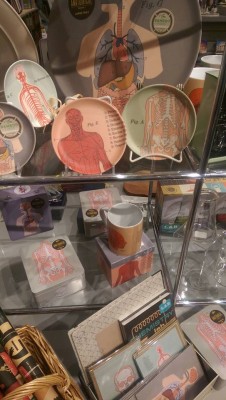
I’d love for cultural museums to offer descriptions and historical context of the food offered if it relates to the museum’s theme. It’s nice for an Asian American museum to offer authentic Asian food from a variety of countries, something different from the Americanized Chinese food often found in restaurants, but when and where did the food originate? Who typically eat it? How has it changed throughout history? These facts could be found on paper tri-pods on the table, on hand-held menus, or on plaques around the café. This wouldn’t take away from the café as a resting spot, but it could add another dimension to the experience and provide optional reading for the whole family. Also, it may inspire guests to order something new!
~Anna Balfanz
Response to Building the Future of Education
In the article Building the Future of Education, a section titled “Every Child a Changemaker” discusses Ashoka’s Start Empathy initiative to bring empathy to every child, to have them better understand the world in which they live. What I found most interesting about this section was how relevant it was to our world today. From the promotion of xenophobia to the Black Live Matter movement, if there is one thing that the world needs, it is empathy.
Laura White, the author of this section asks, “How do we prepare children and young people to thrive in this world?” To which she responds with ensuring “young people are equipped with this new set of skills” referring to empathy and basically, people skills.
I especially think this is relevant to the Jewish Museum of Maryland and even more specifically to the Education and Programs department. Every few weeks or so a school group, majority from the inner city, come and learn about the Lloyd Street Synagogue, most of the students are not Jewish. It is programs and actions like these that open up a child’s understanding to the many different cultures around them. By opening a child’s mind to what is really out there it gets them out of their comfort zone and allows them to celebrate the differences that surround them.
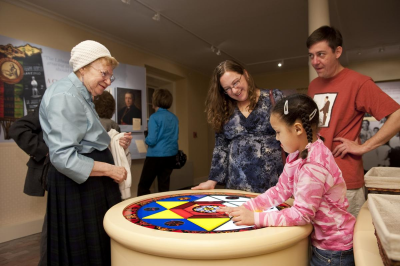
~Rachel Morin
Rich in Learning?
When I read the article “Glimpses of the Future of Education” by Katherine Prince, from the organization KnowledgeWorks, I was struck by how clearly and effectively she outlines two potential educational futures for America—one in which learning is personalized and capable of meeting the needs of everyone (which she calls a “vibrant learning grid”), or one in which the class divide prevents most students from achieving their full potential (aka the “fractured landscape”). Her article is especially interesting to me because she goes on to show ways in which the current system could grow into either future, using specific examples from schools across the nation. These examples are really cool; for instance, did you know there’s a robot that’s been specifically made to help kids by turning them into the teachers? I was really surprised, and then excited.
But Katherine brings up a really good point about it; as cool as working with robots can be, it’s also less time that a child will get with a teacher or other live adult who can react organically and appropriately to the student, and furthermore can model behavior and social cues that are equally as important for students to learn. And since the robots would cost less than paying actual teachers, students in low-income areas would most likely be given these robots instead of additional help from teachers, and lose out in the long-term. But on the flip side there are also programs such as the Flexible Option at the University of Wisconsin, which allows students to demonstrate knowledge equivalent to what they would have learned in a degree program without having to take any classes in order to qualify for the degree. In this way, students who can’t afford to take classes can still have the benefit of a college degree if they can learn the material. I think both of these examples show recent moves in education towards trying to use innovative methods to reach a diverse set of students, and that Katherine’s model of two possible futures for education is a legitimate one to use to think about the future of education.

~Gina Crosby
Room for Growth
Public education places a high value on order, eliminating mistakes and maximizing efficiency. Learning should be social yet balanced with personalization and a good diversity. This is why the first option presented in the article has so much appeal to me; it basically underscores the most important values. A system of educated built on getting people to explore and be participant in their education with interest, it gives students time to try many things. It doesn’t matter if most of these things are not interesting to them, that is a part of the process in itself. It helps students narrow down what they are interested in.
I think one of the most frustrating things I experienced from my time in public education (elementary, middle and highschool) was the urgency placed on getting students to figure out what they wanted to be while keeping them confined in classrooms for the entirety of a day five days a week for most of the year. How is someone supposed to know their future when they are stuck in one place for such a long duration of time? Fast forward to high school, there is a bit more free time and customization but it is earned, through grades and the connections made with faculty. This is disparaging to students who don’t work well with the traditional schooling to begin with. Someone who has trouble sitting still and staring at power points is marked down, this piece of paper then follows them all through their public education and beyond. In some cases this paper overshadows that person’s value as a whole and puts negative connotations and reputation on that person; friends of mine have had to endure the effects of this just by being denied their diploma preventing them from attaining many opportunities in an era where college education is considered a standard for a large swath of jobs that pay a livable wage. The point being, education confined to one place (Fractured Landscape as it is called in the article) has a limited amount it can teach someone.

It is better for institutions such as museums, parks and historical sites to have an audience of people that consistently visit. It is a mutual benefit to the people being taught and the intuitions which exist to educate and entertain the populace. Group field trips or meetings that visit various professions and environments are also incredibly valuable as they give the younger generation chances to seek interests. College visits are considered activities that students undertake with their family; why not make them social activities with other prospective college students. Standardizing education is not something that is going to achieve a well-rounded educated person, this is because experiences cannot be taught. A person can be book educated, but they cannot be taught how to interact outside of that classroom. That is something that must be attained through time, public education/museum education can do a better job of ensuring there is room for that growth.
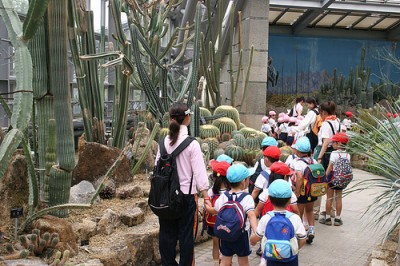
~O. Cade Simon

1 reply on “Intern Thoughts: A Weekly Response”
Very thought provoking ideals. Makes me re-look at my museum visiting experiences. I have been to the Henry Ford Museum and The Walters Museum enjoying both and look forward to changing how I prepare for the next museum I choice to visit. Thank you for the above articles.